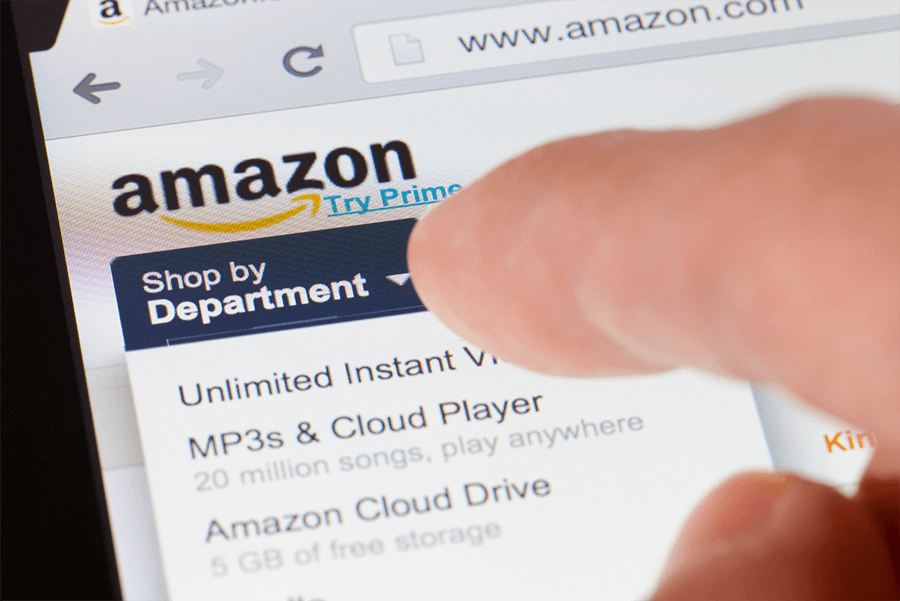3 tips on how sellers can be supported with Amazon and potentially save money in the process.
In recent years, Amazon has often been criticized: poor working conditions, exploitation of sellers, Jeff Bezos’ billionaire fortune, tax evasion, and more.
But are there also positive aspects of the online retail monopoly?
We provide insight and share our experiences with Amazon and how, in our opinion, customers can even use Amazon with a clear conscience.
Prime vs. Marketplace
It is important to know that, among other options, there are fundamentally two main differences when selling products on Amazon: With Prime, you send a stock of your products to an Amazon warehouse, where shipping to the customer is also handled. With the Marketplace, the ordered products are sold directly by the seller (us) after the order is received.
Why is the Marketplace the better option for us as sellers?
Prime products are generally displayed higher on Amazon and offer buyers the great advantage of free shipping. However, for sellers, they come with higher costs: in addition to the standard fees paid to Amazon, there are also storage and shipping costs.
Amazon’s extended and free return policy often lowers the threshold for end consumers to handle products responsibly. As a result, Prime shipments see more returns to the central warehouse in uncertain condition. Some items cannot be resold because they were damaged through improper or careless use. For example, we have received returns with cut cables without knowing the sender. Due to this and other incidents, we decided to process sales exclusively through the Marketplace.
With marketplace sales, it looks a bit different: By saving additional storage costs and the fact that since 2021 refunds can only be issued after the return has been received (and the product inspected), additional costs can at least be reduced.
Nevertheless, even as a marketplace seller, you are still part of the "Amazon system." So how can buyers make a difference?

Amazon as a search engine
Amazon is (unfortunately) extremely important for sellers because most products are searched via the Amazon search bar when customers have a specific purchase intention. From "black FFP2 mask" to "gift for mom," customers either have a clear idea or at least a general direction for their purchase.
How can you support sellers when buying?
Especially with marketplace products, smaller companies are often behind them. You can find these if you don’t just look at the suggested “bestsellers” in the first row of listings (remember: marketplace products are not ranked as highly as Prime items and therefore appear further down or later). It’s often worth scrolling further down.
Once you find a product, try searching for it directly outside of Amazon via Google. Many small businesses—like pro aqua with the Aquarium Fresher—have their own online shops.
By buying directly from the seller’s online shop, you use Amazon as a search engine, support the business (eliminating fees paid to Amazon), and potentially save money (webshop offers/sales, no shipping costs that might apply to marketplace purchases, wider selection, etc.). A win-win situation that just takes a bit of time.
Is there another way to use Amazon “sensibly”?
Amazon as a feedback tool
One of the great advantages for end customers is that on Amazon, you can view reviews and star ratings that provide an overview before purchase of whether a product delivers on its promises. This is also a huge advantage for sellers—provided the products are fairly judged—since good reviews naturally encourage purchases.
Therefore, the appeal: Good experiences deserve feedback! If satisfied, please consider writing a short review and giving stars. High star ratings also benefit marketplace sellers because they can positively affect the product’s listing position.
Pro tip: You can now even rate products if you did not purchase them on Amazon.
Conclusion
Amazon is not only an enormous effort for sellers to set up and manage daily, but it also involves high fees and creates a certain dependency for the seller.
Nevertheless, Amazon offers great potential to gain visibility and attract potential customers with good product reviews. If you don’t want to give up Amazon, a more thoughtful approach can still support small and larger sellers alike.


